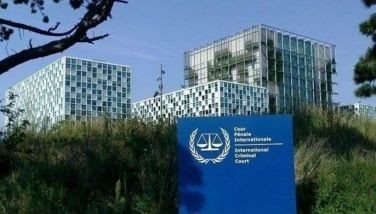Smartest hero? Fr. Burgos tops Rizal
MANILA, Philippines - The yellowed report cards of the country’s national heroes who attended and earned their degrees from the 399-year old University of Santo Tomas (UST) would provide an interesting revelation to many grade-conscious Filipinos who regard our national hero, Dr. Jose P. Rizal, as the most brilliant of them all.
Fr. Florentino Bolo Jr., O.P., secretary-general of the UST, said that contrary to the popular prevailing notion that Rizal was the most academically superior of the country’s heroes, many of whom studied at the “royal pontifical” university, it was one of the three martyred priests of the famed Gomburza, Fr. Jose A. Burgos, who was “primus inter pares,” or first among equals, if their grades were made the basis of comparison.
“Contrary to the prevailing perception, it was not Rizal who performed most brilliantly based on grades but Fr. Burgos,” Bolo told The STAR Friday night during the soft launch of their “Lumina Pandit” exhibit at the UST’s Miguel Benavides Library.
“Yes, Rizal had all those sobresaliente grades but if you’ll look at the report cards of our other heroes, they all had those sobresalientes. Our scholars here had looked into the report cards of our heroes and, after a comparison of their report cards, we found that the most brilliant among them is Fr. Burgos,” Bolo said.
He added that the martyrdom of Burgos along with the two other priests that made up the Gomburza, Fr. Mariano Gomez and Fr. Jacinto Zamora, was also vital in stirring up patriotism and nationalism among Filipinos against Spanish colonial rule in the years leading to independence.
Bolo said that the yellowed report cards of Philippine heroes and other historical figures were just several of many interesting historical treasures on display at the “Lumina Pandit: An Exhibit of Historical Treasures” that will formally open on June 17.
Founded in 1611, UST boasts of producing the “fathers” of the Philippine nation like Rizal, Gomburza, four Philippine presidents including Manuel Luis Quezon, six Supreme Court justices, and many other public service, legal and medical luminaries.
The Lumina Pandit is just one of a series of activities that the UST has lined up for their 400th anniversary celebration.
Associate Professor Giovanna Fontanilla, UST public affairs director, said that aside from the report cards of the UST alumni-heroes the exhibit will also display priceless gems of legacy and learning gathered by the university in its four hundred years of spreading learning among Filipinos.
Fontanilla said rare books and other important historical documents from the sprawling collection of the UST Miguel de Benavides Library will be displayed for those who are interested to learn the country’s rich history.
The exhibit begins with “Threshold 400,” which narrates the arrival of the Dominican fathers in the Philippines.
Among the noted Dominicans who “sustained the spiritual fervor of the conquistadores” and laid the groundwork for Philippine tertiary education were Domingo de Salazar, O.P., first bishop of Manila, and Miguel de Benavides, O.P. third bishop of Manila and founder of UST.
Also to be featured in the first part are some of the oldest books of the UST Library and authentic copies of the University’s Act of Foundation, the Royal Cedula issued by Philip IV of Spain in 1623, the Papal bulls, and royal decrees juxtaposed with period objects from the UST Museum.
“Realm of Print,” the second part of the exhibit, discusses the arrival of the printing press in the Philippines “in aid of production of books for missionary efforts” and presents an exact replica of the first printing press together with the Librong pag-aaralan nang Manga Tagalog nang Uicang Castila, the first Tagalong-written book published by Filipino printer Tomas Pinpin.
Part Three, the “Sphere of Change,” centers on the Filipinos’ exposure to new ideas in the field of law, medicine, agriculture, architecture, engineering, and theology, among others, by reading the works of Copernicus, Aristotle, Galileo, Strabon, Thomas Aquinas and Ceferino Gonzales, to name a few.
The fourth part under the heading “Routes of Globalization” recounts the first circumnavigation voyage led by Magellan, whose death on Philippine soil planted the seeds of Filipino nationalism amid the “tremendous advances in the history of humanity” as can be grasped from the books Rlazione del primo Viaggio, De Molucis Insulis, Ataque de Limahon, and Historia Mundi, among others.
The exhibit then reorients its viewers to the “most important decisions that have been made, rightly or wrongly, that makes us who we are today” in the fifth part titled “Nascent Nation.”
This describes the Philippines as “truly the only country in Asia whose children were nurtured in a Scholastic tradition that stretches back all the way to classical civilization.”
Issues on catechism, nationalism, freedom, equality, commerce and trade, economics, and human rights will likewise be expounded at this juncture.
“Curve of Nationalism” caps the six-part exhibit, drum-beating the 399-year old UST’s achievements and contributions to the Philippines.
- Latest
- Trending































